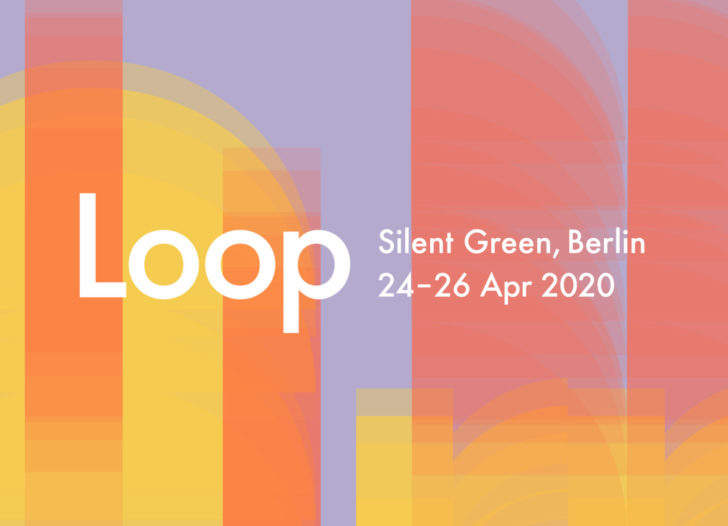
Ableton has opened registration for their Loop creative summit, to be held in Berlin from April 24 to 26, 2020.
Loop is three days of performances, talks, and interactive workshops aimed at exchanging ideas at the cutting edge of music, technology, and creative practice. Bringing together artists, technologists, educators, and other creative thinkers, Loop is a collective exploration of what it is to make music today and what it could be tomorrow.
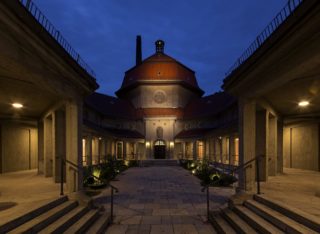 Loop 2020 will be centered around Silent Green Kulturquartier (pictured) and adjoining contemporary art spaces Savvy, Ebensperger Rhomberg and Luxoom Lab. This collection of venues covers the grounds of Berlin’s first crematorium, providing a historical setting for forward-thinking artistic practice. Nearby Bonello Studios will complete the Loop 2020 campus.
Loop 2020 will be centered around Silent Green Kulturquartier (pictured) and adjoining contemporary art spaces Savvy, Ebensperger Rhomberg and Luxoom Lab. This collection of venues covers the grounds of Berlin’s first crematorium, providing a historical setting for forward-thinking artistic practice. Nearby Bonello Studios will complete the Loop 2020 campus.
Since its founding in 2015, Loop has brought together musicians and producers from around the world for three days of talks, performances and hands-on workshops on music, technology and creative practice. Among other topics, Loop attendees can expect discussions around music and self-expression, thinking beyond the constraints of hardware and software, and creating music against the status quo.
Overlap with Superbooth? The upcoming 2020 edition of Loop falls on the same weekend as Superbooth, presenting music makers with an opportunity to experience two music events in one visit to Berlin. Organizers are working together closely to ensure that attendees can experience the best of both events.
Pricing and Availability. Tickets to Loop 2020 are available beginning today. In addition to regular Summit Passes, Ableton is opening the event up to a wider audience by offering 80 Subsidized Passes (registration until October 1). Creators interested in attending the event can register for Summit Passes, Student and Youth Passes, as well as Subsidized Passes on the Loop website.
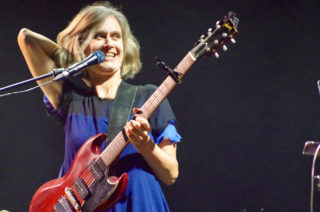 Highlights from Loop 2018. Videos from last year can be revisited at Ableton.com. Some highlights include: Andrew Huang hosting the Start Here sample challenge, which saw 800 tracks submitted by producers from around the world in just 12 hours; acclaimed Argentinian musician Juana Molina (pictured) talking us through her Amoeba Music haul for What’s In My Bag? ; and Ableton Certified Trainer and licensed attorney Abid Hussein’s enlightening presentation on sampling and copyright.
Highlights from Loop 2018. Videos from last year can be revisited at Ableton.com. Some highlights include: Andrew Huang hosting the Start Here sample challenge, which saw 800 tracks submitted by producers from around the world in just 12 hours; acclaimed Argentinian musician Juana Molina (pictured) talking us through her Amoeba Music haul for What’s In My Bag? ; and Ableton Certified Trainer and licensed attorney Abid Hussein’s enlightening presentation on sampling and copyright.
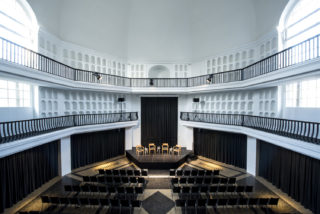
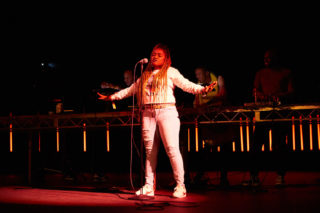
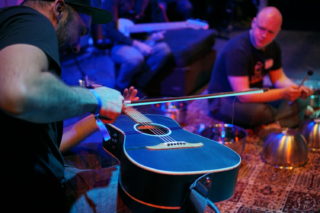
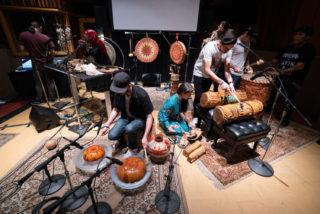
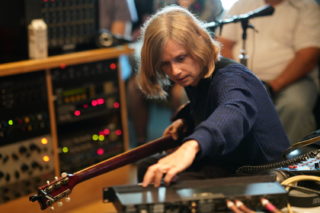
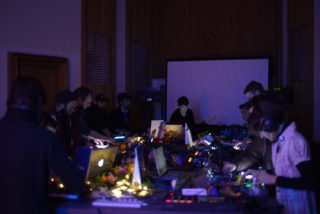

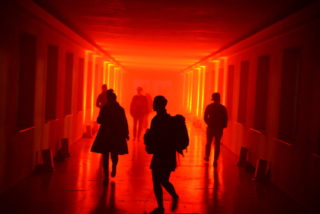

Super Loop! That’s gonna be one crazy weekend 🙂
Here’s to hoping that enough people can influence the Ableton team to make proper MIDI Polyphonic Expression support (in the form of an “MPE MIDI” Track Input option) a top priority. In just a few months, MPE will pass its two year anniversary as part of the standard MIDI specification. It’s almost hard to believe that the premier DAW for live performance still doesn’t have decent MPE capabilities like editing more than one note per MIDI Clip. Surely the wait is nearly over, right?
I get that it’s a thing for some people, but I am not sure why they would make it a top priority. Most Live users don’t even have MPE-capable controllers at this point, and only few people really have a specific use for it. I think it’s still very much in the “nice to have” category of features, while there are far more urgent things the developers need to work on.
I’m not so sure I would say that. Many Ableton customers are currently using Reaper as a ReWire slave into Live because Reaper is one of the few DAW’s out there that will allow VST instrument hosting in slave mode, thereby making it a fairly decent solution for adding MPE (at a reasonable cost too!) while Ableton works on proper MPE support. The Ableton forums have had posts requesting MPE support in Live for years and of all the Bitwig users I know that switched from Live to Bitwig, among their top reasons for switching were MPE support along with the extensive modulation environment and more advanced editing capabilities within clips in Bitwig versus those in Live. Four years ago I would have agreed that MPE users are a limited bunch with specific use scenarios but I now see Roli Seaboard Rise keyboards all the time in studios and have seen the Roli Blocks range being used in public by adults and kids alike.
MPE is going mainstream, especially for film/TV producers and electronic musicians. The playing expressiveness speaks for itself and the amount of time saved by not having to manually write a drastic amount of automation to achieve realistic results for brass, bow, and wind instruments means that working producers can get more done in less time. That reason alone was a driving force behind getting MPE implemented so quickly in Logic since it is used by a lot of TV and film composers. Electronic music producers want in on that expressivity too so they can write their automation as they play rather than after the take. It’s faster, often more realistic sounding, and feels much more like playing the actual emulated instrument rather than a half hearted before automation version of it.
I love Ableton and have been using it since the launch of Live 5 after having been a Logic user for years so I really don’t want to learn a new DAW and would prefer to only have to run one DAW at a time just for organizational reasons. Hopefully the Ableton team is getting close to unveiling a properly implemented MPE architecture and I can go back to having my projects contained within one application.
Those are some very valid points. What you’re writing actually makes me want to try MPE and find out what all the buzz is about 🙂
You most certainly should! The amount of time it saves by not having to write automation to give sounds an extra level of expression is nearly worth the price alone. It will also take you to new sonic territory as I’ve found myself automating parameters I may not have considered otherwise had the Seaboard not triggered their envelopes and written automation to them during the take. In my experience with electronic music, just about any new way to add expression is a welcome addition to my setup since a traditional piano keyboard is great for some sounds but terrible for others.
While it’s not considered an MPE device, the Touché by Expressive E often reminds me of one due to the level of expression it offers despite being monophonic. Adding a human feel to violins and cellos feels much more natural on the Touché than on the Seaboard Rise but the Rise has an advantage with brass instruments and many synth sounds like pads and chords, plus its expression is polyphonic. However, the Touché also has CV outputs on it as well as traditional MIDI DIN I/O onboard so it can be used with my eurorack modular or any of my hardware synths without them needing to support MPE. I honestly don’t think I could choose one over the other as they are complementary and fill different roles.
Here’s a link to a variety of sounds being played on a Seaboard Rise 49:
https://www.youtube.com/watch?v=5yzwoc1l5e0
A few links showing the capabilities of the Touché by Expressive E:
https://www.youtube.com/watch?v=GZhf-Yp8xEU&list=PLp2-AmX_zKfpy78hcbnMCGQPjNH_Aqwwa&index=5
https://www.youtube.com/watch?v=UEHt7G9w488&list=PLp2-AmX_zKfpy78hcbnMCGQPjNH_Aqwwa&index=2
https://www.youtube.com/watch?v=QFCDblT4Lh0&list=PLp2-AmX_zKfpy78hcbnMCGQPjNH_Aqwwa&index=1
These cover Expressive E’s Arché collection when used with the Touché:
https://www.youtube.com/watch?v=oTxgHJMpKsw&list=PLp2-AmX_zKfpKMFr7Obqpi8J4DRBhUGF8&index=7
https://www.youtube.com/watch?v=iTu7BeLd3Y8&list=PLp2-AmX_zKfpKMFr7Obqpi8J4DRBhUGF8&index=8
DISCLAIMER: I do not work for ROLI or Expressive E, I just use their products. The Seaboard Rise 49 and Touché have added a whole new level of expression to both my software and hardware instruments and have added to my enjoyment of those instruments immensely!
The same here. Going away of Ableton because of lack of MPE support. Another big one is working with video- frame rate grid.